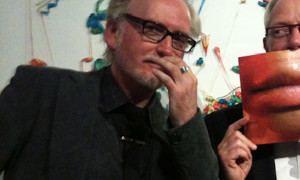Black noise: from a meteorology to a demonology of the cloud
Modern media of mass communication – telegraphy, photography, radio, cinema, the telephone and television – have been astutely described as ‘haunted’: they are, or were, domains of disembodied voices, of actions detached from their distant agents, of ghosted images, and of white noise. Analogue photography, in particular, was prone to revealing emanations and auratic presences, whether as personified spirits, psychic projections or ethereal force fields. Cinematic spectatorship seemed historically and topographically to correlate exquisitely with the modern psychoanalytical diagnosis of neurotic symptoms, and also anachronically with the sacramental artifice of clairvoyance or séance: channelling. Those modern media were theoretically and practically styled as channels of communication with polar isolated correspondents, the signals between whom were susceptible to interference by untrackable, ineffable, beguiling, alien presences who loomed within movie screens, manifested in graveyard shift TV transmissions or crackled within radio headphones tuned to short wave…as if they were spectres lurking in an empty mansion. But our contemporary media – the data clouds formed from interactive social media in which content, software and platforms are offered on demand yet held in corporately operated hyperlinked assemblies streaming into and out of individual computers – stipulate a different demonology. What ghouls inhabit the cloud’s prospect of superabundant connectivity and accessibility? Viruses and bugs, or course, but also worms, seeders, hosts, leeches, trolls, parasites. The data cloud’s communal spaces are inundated by paranormal pollutants and pathogens, and erupt in paranoia, contagion and pandemic possession. These demons manifest as if they were chemical storms in a miasma, a disintegrating turbulence or teeming torrent; or as oncogenic melanomata: as black noise.
Edward Colless is Head of Critical and Theoretical Studies at the Victorian College of the Arts, University of Melbourne. He has in the past worked in theatre, film, broadcasting and architecture, been a curator, worked as a travel writer, and dabbled in fiction—but mainly he writes art criticism. In this field he has, among other assignments, been arts reviewer for the national newspaper The Australian, and associate editor and features writer for Australian Art Collector. He also uses every opportunity to write on arcane topics, the more obscure the better: heretical theology, art historical marginalia, crypto-zoology and crypto-archaeology.
